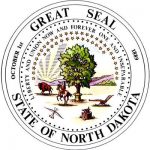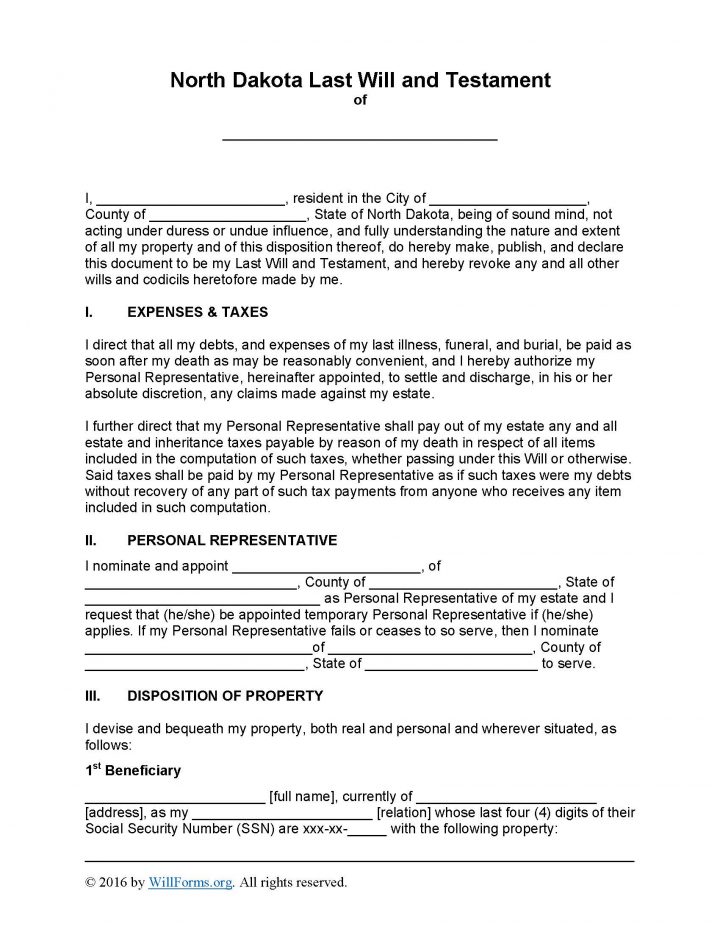
|
North Dakota Last Will and Testament Form |
The North Dakota last will and testament is a legally recognized document that provides guidance to any individual (Testator) who would like to outline a standard will so that their affairs will be in order at any time, in the event of the death of the Testator. The document will provide the ability to name a trusted executor to distribute the estate (which may or may not include personal property, real property and financial accounts of any kind) and will do so honorably according to the written wishes of the Testator. As well, the document will allow the Testator to enter beneficiary information and name the property to be bequeathed to each.
This document must be completed by the Testator and they must do so while of sound mind. The document may be changed or revoked at any time, as long as the Testator is of sound mind to do so.
Laws – 30.1-08-01, et seq.
How to Write
Step 1 – Once the document has been downloaded, Submit the Testator’s name at the top of the page – Proceed by entering:
- The Testator’s name
- City
- County
- Review “Expenses and Taxes”
Step 2 – Establishment of an Executor – The Testator may wish to establish an executor by providing the following:
- Executor’s full name
- Address
- County
- State
If the first selected executor is unavailable or unwilling to continue service, an alternate may be selected in advance. Enter the following:
- The alternate’s full name
- Address
- County
- State
Step 3 – Property Disposition –Enter all beneficiary information. If there are more beneficiaries add a sheet with their information and attach it to the form – sign and date each additional page
- Beneficiary’s name
- Address
- Relationship
- Last four (4) digits of the beneficiary’s Social Security Number
- Testator must read over the remaining paragraphs
- If additional instructions, the Testator may add a separate sheet and attach it to this document – sign and date each additional page
Step 4 – Titled Sections –
- Omissions
- Bond
- Discretionary Powers of Personal Representative (subsections A through K)
- Contesting Beneficiary
- Guardian Ad Litem Not Required
- Gender
- Assignment
- Governing Law
Step 5 – Binding Agreement – Principal must read and agree to the first paragraph. Proceed by entering:
- Testator’s name
- Date of the document’s executution (dd/mm/yyyy)
- Testator’s name
- Printed name
- Date of signature (dd/m/yy format)
- Testator’s name
Step 6 – Witness Signatures and Notary Public – Signatories must be present before a notary
Witnesses –
- Witnesses signatures (respectively)
- Addresses (Current)
Testamentary Affidavit –
- The notary shall acknowledge this document
- The notary will provide the names of signatories
- Testator’s signature
- Witnesses signatures

